 W
WThe following outline is provided as an overview of and topical guide to wine
 W
WAltiplano de Sierra Nevada is a Spanish geographical indication for Vino de la Tierra wines located in the autonomous region of Andalusia. Vino de la Tierra is one step below the mainstream Denominación de Origen indication on the Spanish wine quality ladder.
 W
WAn American Viticultural Area (AVA) is a designated wine grape-growing region in the United States, providing an official appellation for the mutual benefit of wineries and consumers. Winemakers frequently want their consumers to know about the geographic pedigree of their wines, as wines from a particular area can possess distinctive characteristics. Consumers often seek out wines from specific AVAs, and certain wines of particular pedigrees can claim premium prices and loyal customers. If a wine is labeled with an AVA, at least 85% of the grapes that make up the wine must have been grown in the AVA, and the wine must be fully finished in the state where the AVA is located.
 W
WAustralia has over 160 grape varieties distributed on 146,244 hectares (ha) across all six states, South Australia, New South Wales, Victoria, Western Australia, Tasmania and Queensland. These activities are concentrated largely in the southern part of the continent where the terroir - that is, soil types, local climate, availability of irrigation and so on - is suited to viticulture.
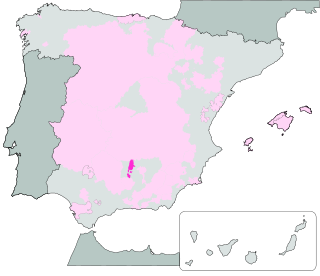 W
WBailén is a Spanish geographical indication for Vino de la Tierra wines located in the autonomous region of Andalusia. Vino de la Tierra is one step below the mainstream Denominación de Origen indication on the Spanish wine quality ladder.
 W
WBajo Aragón is a Spanish geographical indication for Vino de la Tierra wines located in and near Lower Aragon, in the autonomous region of Aragon. Vino de la Tierra is one step below the mainstream Denominación de Origen indication on the Spanish wine quality ladder.
 W
WBarbanza e Iria is a Spanish geographical indication for Vino de la Tierra wines located in the autonomous region of Galicia. Vino de la Tierra is one step below the mainstream Denominación de Origen indication on the Spanish wine quality ladder.
 W
WBetanzos is a Spanish geographical indication for Vino de la Tierra wines located in the autonomous region of Galicia. Vino de la Tierra is one step below the mainstream Denominación de Origen indication on the Spanish wine quality ladder.
 W
WCádiz is a Spanish appellation describing Vino de la Tierra wines whose terroir is located in the autonomous region of Andalusia. Vino de la Tierra is one step below the mainstream Denominación de Origen indication on the Spanish wine quality ladder.
 W
WCampo de Cartagena is a Spanish geographical indication for Vino de la Tierra wines located in the autonomous Region of Murcia. Vino de la Tierra is one step below the mainstream Denominación de Origen indication on the Spanish wine quality ladder.
 W
WCastelló is a Spanish geographical indication for Vino de la Tierra wines located in the province of Castellón in the autonomous region of Valencia. Vino de la Tierra is one step below the mainstream Denominación de Origen indication on the Spanish wine quality ladder.
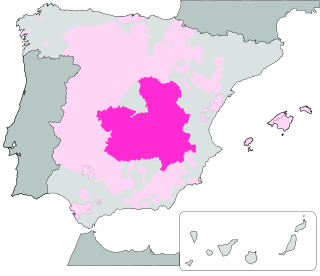 W
WCastilla is a Spanish geographical indication for Vino de la Tierra wines located in the autonomous region of Castilla-La Mancha. Vino de la Tierra is one step below the mainstream Denominación de Origen indication on the Spanish wine quality ladder.
 W
WCastilla y León is a Spanish geographical indication for Vino de la Tierra wines located in the autonomous region of Castile and León. Vino de la Tierra is one step below the mainstream Denominación de Origen indication on the Spanish wine quality ladder.
 W
WThe Chablis region of Burgundy is classified according to four tiers of Appellation d'origine contrôlée (AOC) designation. The top two are the crus of Chablis and include the 7 Grand cru vineyards followed by the lower Premier crus. Wines made entirely from fruit from these vineyards are entitled to list their wines as cru classé Chablis on the wine label. Below these tiers are the lower designations of basic Chablis AOC and Petit Chablis. Soil quality and hill slope play a major role in delineating the differences. Many of the Premier Crus, and all the Grand Crus vineyards, are planted along valley of the Serein river as it flows into the Yonne with the best sites located on a southwest facing slope that receives the maximum amount of sun exposure. All of Chablis' Grand Cru vineyards and many of their better Premier Cru vineyards are planted on primarily Kimmeridgean soil which is believed to impart more finesse and structure to the wines. Other areas, particularly the vast majority of Petit Chablis vineyards, are planted on slightly younger Portlandian soil.
 W
WThe listing below comprises some of the more prominent houses of Champagne. Most of the major houses are members of the organisation Union de Maisons de Champagne (UMC), and are sometimes referred to as Grandes Marques.
 W
WCórdoba is a Spanish geographical indication for Vino de la Tierra wines located in the autonomous region of Andalusia. Vino de la Tierra is one step below the mainstream Denominación de Origen indication on the Spanish wine quality ladder.
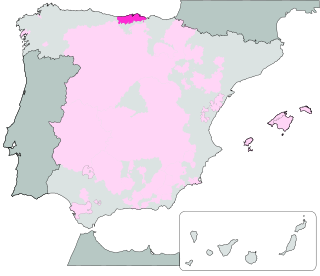 W
WCosta de Cantabria is a Spanish geographical indication for vino de la tierra wines located in the autonomous region of Cantabria, on the north coast of Spain. Vino de la tierra is one step below the mainstream denominación de origen indication on the Spanish wine quality ladder.
 W
WThis list of wine-producing regions catalogues significant growing regions where vineyards are planted. Wine grapes mostly grow between the 30th and the 50th degree of latitude, in both the Northern and Southern hemispheres. Grapes will sometimes grow beyond this range, thus minor amounts of wine are made in some rather unexpected places.
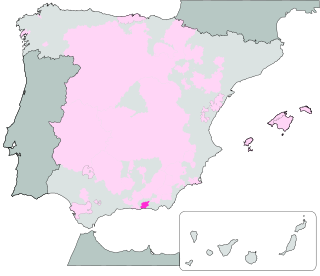 W
WCumbres del Guadalfeo is a Spanish geographical indication for Vino de la Tierra wines located in the Alpujarras mountains, in the autonomous region of Andalusia. Vino de la Tierra is one step below the mainstream Denominación de Origen indication on the Spanish wine quality ladder.
 W
WDesierto de Almería is a Spanish geographical indication for Vino de la Tierra wines located in the autonomous region of Andalusia. Vino de la Tierra is one step below the mainstream Denominación de Origen indication on the Spanish wine quality ladder.
 W
WExtremadura is a Spanish geographical indication for Vino de la Tierra wines located in the autonomous region of Extremadura. Vino de la Tierra is one step below the mainstream Denominación de Origen indication on the Spanish wine quality ladder.
 W
WFormentera is a Spanish geographical indication for Vino de la Tierra wines located in Formentera in the autonomous region of the Balearic Islands, Spain. Vino de la Tierra is one step below the mainstream Denominación de Origen indication on the Spanish wine quality ladder.
 W
WGerman wine regions are classified according to the quality category of the wine grown therein: Tafelwein, Landwein, Qualitätswein bestimmter Anbaugebiete (QbA) and Prädikatswein. The wine regions allowed to produce QbA and Prädikatswein are further subdivided into four categories according to size: Anbaugebiet, Bereich, Großlage and Einzellage. A small number of Einzellagen do not belong to a Großlage and are called "großlagenfrei", but all belong to a Bereich and Anbaugebiet.
 W
WIbiza is a Spanish geographical indication for Vino de la Tierra wines located in the autonomous region of the Balearic Islands, Spain. Vino de la Tierra is one step below the mainstream Denominación de Origen indication on the Spanish wine quality ladder.
 W
WIlles Balears is a Spanish geographical indication for Vino de la Tierra wines located in the autonomous region of the Balearic Islands, Spain. Vino de la Tierra is one step below the mainstream Denominación de Origen indication on the Spanish wine quality ladder.
 W
WIsla de Menorca is a Spanish geographical indication for Vino de la Tierra wines located in the autonomous region of the Balearic Islands, Spain. Vino de la Tierra is one step below the mainstream Denominación de Origen indication on the Spanish wine quality ladder.
 W
W W
WLaujar-Alpujarra is a Spanish geographical indication for Vino de la Tierra wines located in the autonomous region of Andalusia. Vino de la Tierra is one step below the mainstream Denominación de Origen indication on the Spanish wine quality ladder.
 W
WLiébana is a Spanish geographical indication for Vino de la Tierra wines located in the autonomous region of Cantabria, on the north coast of Spain. Vino de la Tierra is one step below the mainstream Denominación de Origen indication on the Spanish wine quality ladder.
 W
WLos Palacios is a Spanish geographical indication for Vino de la Tierra wines located in the autonomous region of Andalusia. Vino de la Tierra is one step below the mainstream Denominación de Origen indication on the Spanish wine quality ladder.
 W
WMallorca is a Spanish geographical indication for Vino de la Tierra wines located in the island of Mallorca in the autonomous region of the Balearic Islands, Spain. Vino de la Tierra is one step below the mainstream Denominación de Origen indication on the Spanish wine quality ladder.
 W
WNorte de Almería is a Spanish geographical indication for Vino de la Tierra wines located in the autonomous region of Andalusia. Vino de la Tierra is one step below the mainstream Denominación de Origen indication on the Spanish wine quality ladder.
 W
WAccording to the Method of Punctuation of the Plots of Land of Vineyards of the Region of Douro, there were 30 recommended and 82 permitted grape varieties in Port wine production. The quality and characteristics of each grape varies with the classification of grape varieties making a distinction between "Very Good", "Good", "Average", "Mediocre" and "Bad" quality grapes. But this classification is actually in revaluation based on the technical and scientific data of the CEVD. The six most widely used grapes for red Port wine are Touriga Franca, Tinta Roriz, Tinta Barroca, Touriga Nacional, Tinta Cão and Tinta Amarela.
 W
WPortuguese wine regions are grouped into three levels of classification. At the top are the Denominação de Origem Controlada which are Quality Wines Produced in Specified Regions (QWpsr) under the European Union wine regulations and thus correspond roughly to the French Appellation d'origine contrôlée (AOC) and Spanish Denominación de Origen (DO) classifications. The second group consist of Indicação de Proveniência Regulamentada (IPRs), and are also QWpsr. IPRs are used for DOC candidates "in training", and this level roughly corresponds to the French Vin Délimité de Qualité Superieure (VDQS) system. The final group are the Vinho Regional (VRs), which are table wines with a geographical indication under EU regulations. VRs each cover a larger area and are similar to the French Vin de pays at regional/departmental level.
 W
WRibera del Andarax is a Spanish geographical indication for Vino de la Tierra wines located in the autonomous region of Andalusia. Vino de la Tierra is one step below the mainstream Denominación de Origen indication on the Spanish wine quality ladder.
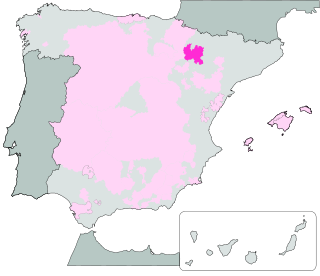 W
WRibera del Gállego-Cinco Villas is a Spanish geographical indication for Vino de la Tierra wines located in the wine-producing areas of Ribera del Gállego and the Cinco Villas, in the provinces of Huesca and Zaragoza, in the autonomous region of Aragon, Spain. Vino de la Tierra is one step below the mainstream Denominación de Origen indication on the Spanish wine quality ladder.
 W
WRibera del Jiloca is a Spanish geographical indication for Vino de la Tierra wines located in the wine-producing area of the Jiloca Valley, in the provinces of Teruel and Zaragoza, in the autonomous region of Aragon, Spain. Vino de la Tierra is one step below the mainstream Denominación de Origen indication on the Spanish wine quality ladder.
 W
WRibera de Queiles is a Spanish geographical indication for Vino de la Tierra wines located in the province of Zaragoza and in the southern part of Navarre. Vino de la Tierra is one step below the mainstream Denominación de Origen indication on the Spanish wine quality ladder.
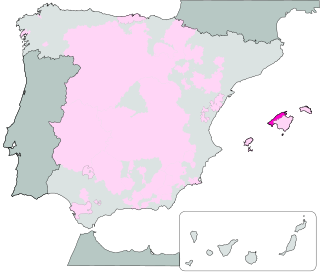 W
WSerra de Tramuntana-Costa Nord is a Spanish geographical indication for Vino de la Tierra wines located on the north coast of the island of Mallorca in the autonomous region of the Balearic Islands, Spain. Vino de la Tierra is one step below the mainstream Denominación de Origen indication on the Spanish wine quality ladder.
 W
WSierra Norte de Sevilla is a Spanish geographical indication for Vino de la Tierra wines located in the Sierra Norte de Sevilla range of the Sierra Morena, Andalusia, southern Spain. Vino de la Tierra is one step below the mainstream Denominación de Origen indication on the Spanish wine quality ladder.
 W
WSierra Sur de Jaén is a Spanish geographical indication for Vino de la Tierra wines in the Sierra Sur de Jaén area, Andalusia, Spain. Vino de la Tierra is one step below the mainstream Denominación de Origen indication on the Spanish wine quality ladder.
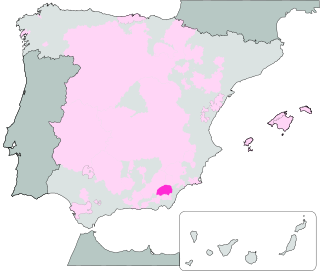 W
WSierras de las Estancias y los Filabres is a Spanish geographical indication for Vino de la Tierra wines located in the autonomous region of Andalusia. Vino de la Tierra is one step below the mainstream Denominación de Origen indication on the Spanish wine quality ladder.
 W
WThe mainstream quality wine regions in Spain are referred to as denominaciones de origen protegidas (DOP) and the wine they produce is regulated for quality according to specific laws, and in compliance with European Commission Regulation (CE) 753/2002. In 2016, the use of the term Denominación de Origen (DO) was updated to Denominación de Origen Protegida (DOP) by the Spanish Ministry of Agriculture, Fisheries and Food ; the traditional term of DO can still be used legally on labels, but it will eventually be replaced by DOP.
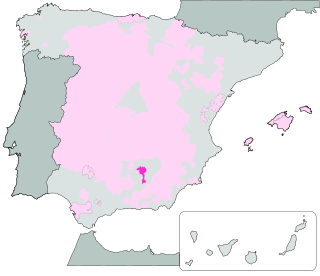 W
WTorreperogil is a Spanish geographical indication for Vino de la Tierra wines located in the autonomous region of Andalusia. Vino de la Tierra is one step below the mainstream Denominación de Origen indication on the Spanish wine quality ladder.
 W
WValdejalón is a Spanish geographical indication for Vino de la Tierra wines located in the wine-producing area of Valdejalón, in the province of Zaragoza, in the autonomous region of Aragon, Spain. Vino de la Tierra is one step below the mainstream Denominación de Origen indication on the Spanish wine quality ladder.
 W
WValencia is a Spanish Denominación de Origen Protegida (DOP) for wines located in the Province of Valencia within the Valencian Community and is divided into two separate zones and four sub-zones, each of which produces a different type of wine.
 W
WValle del Cinca is a Spanish geographical indication for Vino de la Tierra wines located in the wine-producing area of the Cinca Valley, in the province of Huesca, in the autonomous region of Aragon, Spain. Vino de la Tierra is one step below the mainstream Denominación de Origen indication on the Spanish wine quality ladder.
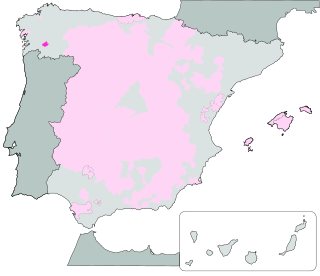 W
WVal do Miño-Ourense is a Spanish geographical indication for Vino de la Tierra wines located in the autonomous region of Galicia. Vino de la Tierra is one step below the mainstream Denominación de Origen indication on the Spanish wine quality ladder.
 W
WThe use of wine tasting descriptors allows the taster to qualitatively relate the aromas and flavors that the taster experiences and can be used in assessing the overall quality of wine. Wine writers differentiate wine tasters from casual enthusiasts; tasters attempt to give an objective description of the wine's taste, casual enthusiasts appreciate wine but pause their examination sooner than tasters. The primary source of a person's ability to taste wine is derived from their olfactory senses. A taster's own personal experiences play a significant role in conceptualizing what they are tasting and attaching a description to that perception. The individual nature of tasting means that descriptors may be perceived differently among various tasters.
 W
WThis list of wine-producing regions catalogues significant growing regions where vineyards are planted. Wine grapes mostly grow between the 30th and the 50th degree of latitude, in both the Northern and Southern hemispheres. Grapes will sometimes grow beyond this range, thus minor amounts of wine are made in some rather unexpected places.
 W
WAnnual wine festivals celebrate viticulture and usually occur after the harvest of the grapes which, in the northern hemisphere, generally falls at the end of September and runs until well into October or later. They are common in most wine regions around the world and are to be considered in the tradition of other harvest festivals.